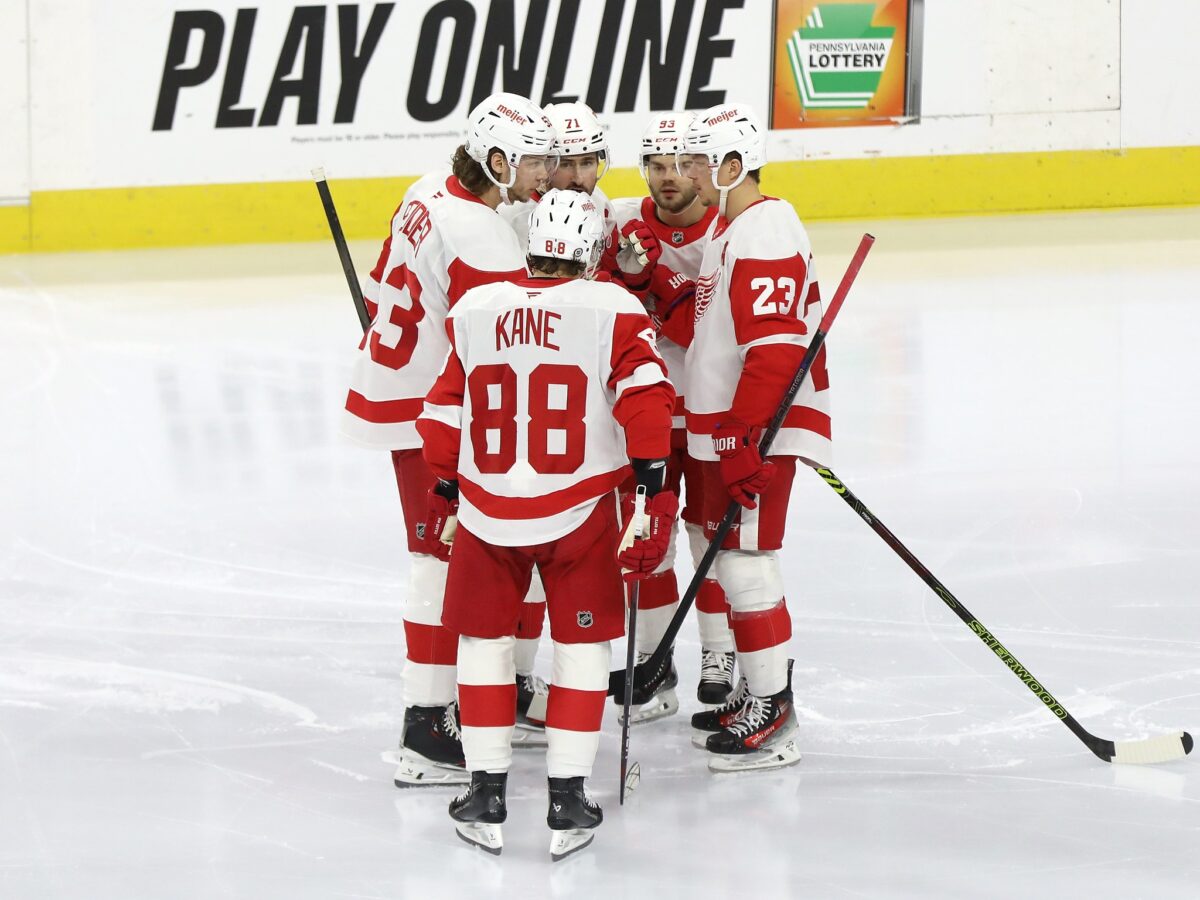Special teams can make or break a season, and they were the great separator for the Detroit Red Wings in the 2024–25 campaign. For years, Detroit lacked a true edge on special teams, often falling behind in crucial moments. But last season changed everything. The power play became elite, finishing fourth in the NHL. The power play transformed the Red Wings from a fringe playoff contender into a team that could control momentum, tilt the ice, and win the tight games that had once slipped away.
An Elite Power Play
The power play was nothing short of a revelation. Under Todd McLellan, the Red Wings emphasized creativity, puck movement, and unpredictability. The result was a man-advantage unit that looked dangerous every single game.
Related: 3 Red Wing PTO Targets Ahead of 2025-26 Season
Moritz Seider blossomed into a true power-play quarterback, confidently directing traffic from the blue line and letting his booming shot go when defenders collapsed low. Lucas Raymond thrived on the half-wall, using his vision to thread passes into dangerous areas or rip shots himself. Alex DeBrincat’s one-timer from the left circle became a trademark of the attack, forcing penalty killers to respect his release and opening space for others. Dylan Larkin anchored the net front, screening goaltenders, digging out rebounds, and capitalizing on second-chance opportunities. Patrick Kane’s vision and hands added a layer of magic, keeping defenders guessing every time he touched the puck.

The result was a power play that converted more than 24% of its chances. When Detroit earned a man advantage, there was a sense of inevitability in the building. This wasn’t just a power play; it was a weapon that could break open a game or erase a deficit in seconds.
A Revitalized Penalty Kill
Equally important in 2025-26 is going to be the penalty kill, which will look to take a massive step forward. Detroit finished 32nd in the league with a penalty kill of 70.3% and is looking to climb into the league’s top half in penalty kill success rate, giving the team stability and confidence when down a man. The offseason addition of Mason Appleton will look to prove crucial, as he brings energy, shot-blocking, and relentless forechecking pressure. Andrew Copp and Michael Rasmussen provide length and hockey sense up front, forcing turnovers and disrupting zone entries.
On the blue line, Seider and Ben Chiarot will look to form a dependable shutdown duo, clearing the crease and challenging shooters aggressively. The goaltending will be equally strong with the offseason addition of John Gibson; he will look to bring timely saves, keeping momentum from swinging the other way. This is a penalty kill that is not just trying to survive. It will attack, pressure, and even generate shorthanded scoring chances that swing momentum back in Detroit’s favor.
Why This Matters
In today’s NHL, where parity is at an all-time high, special teams can be the deciding factor between simply competing and truly contending. The Atlantic Division is unforgiving, featuring power-play juggernauts, like the Tampa Bay Lightning, Florida Panthers, and Toronto Maple Leafs, all boasting power-play percentages north of 23.5%. Falling behind in this area means giving away free momentum and points in a division where every game matters. That’s why Detroit’s leap forward last season was so significant. The Red Wings didn’t just keep pace with the league’s elite; they matched and often outperformed them, turning their special teams into a weapon that consistently swung games in their favor.
A top-five power play and a penalty kill that consistently got the job done turned Detroit into a team capable of hanging with the division’s best. The Wings were no longer just hoping to win the special teams battle; they were expecting to.
The Red Wings’ Next Step
Looking ahead to 2025–26, Detroit’s special teams may be the single biggest factor in turning them from a fringe playoff contender into a legitimate threat contender. With McLellan continuing to tweak and refine the systems, and with Seider, Raymond, and DeBrincat still entering their primes, the ceiling for this group is sky-high.
Detroit’s rebuild was built on patience and structure, but now it’s powered by execution and confidence. If the man advantage stays lethal and the penalty kill keeps frustrating opponents, the Red Wings won’t just be fighting for a playoff spot. They’ll be fighting for playoff success.
